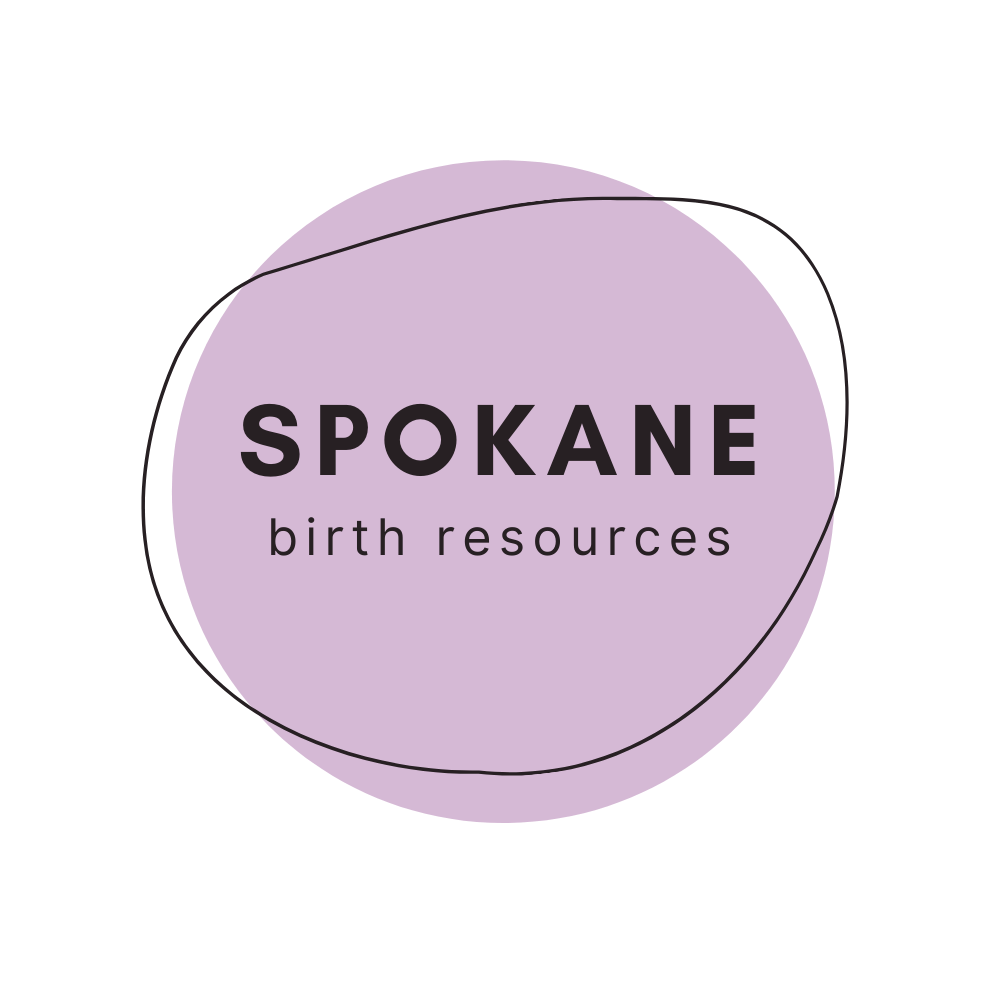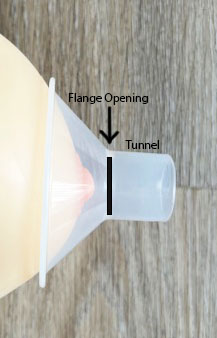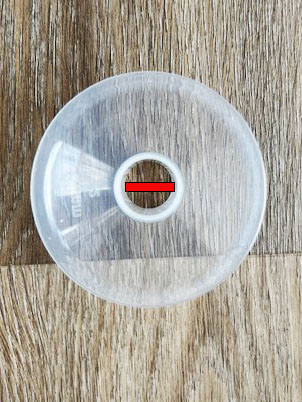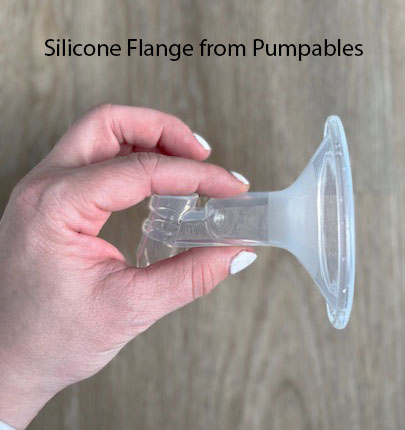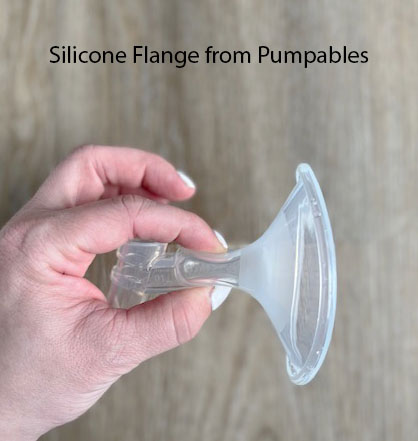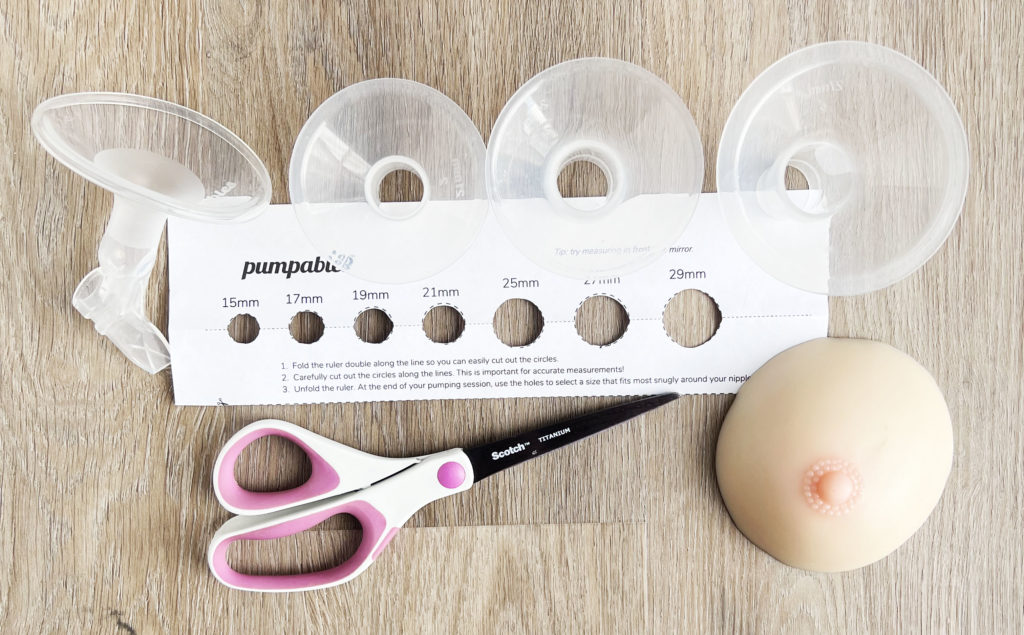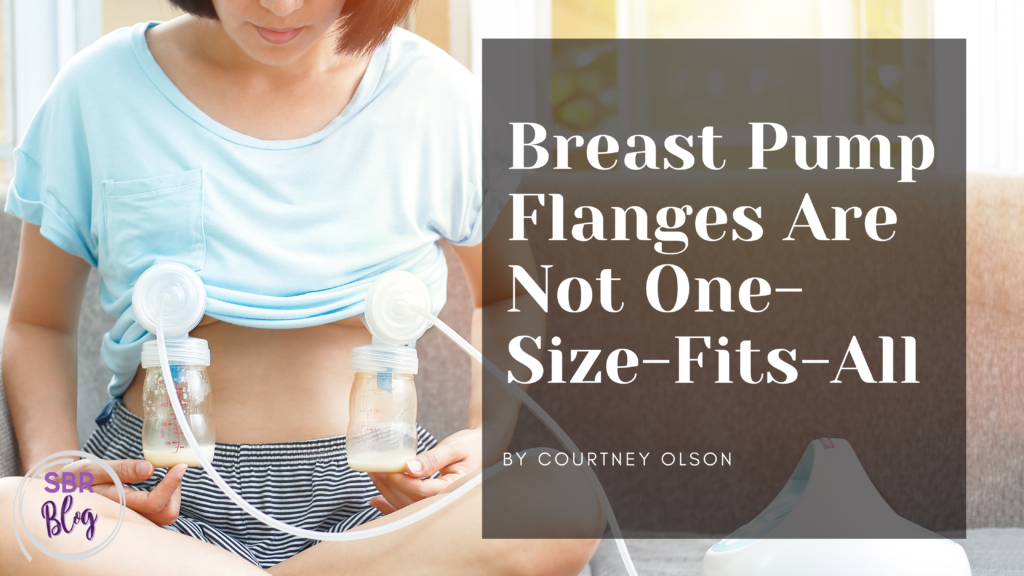
By Courtney Olson, MS, CCC-SLP, IBCLC
Many women use electric breast pumps at some point during their breastfeeding journey. Not all pumps are created equal and there are many things to consider when selecting a breast pump, including:
- portability
- customizability
- ease of use
- empties breasts
- cost
- open system vs closed system
- noise level
- lighting options for night pumping
- availability of replacement parts
- hands-free capabilities
- vibration
- silicone vs hard plastic flanges
- comfort and sizing of flanges
I would argue the most important factor to consider is comfort and sizing of flanges. If you are using a flange size that is too large or too small it can lead to:
- incomplete milk removal
- recurrent clogged ducts and mastitis
- cracked or sore nipples that are not healing
- overall pain and discomfort
- nipple or areola discoloration
What is a breast pump flange?
One thing every single breast pump will come with is a breast flange. Some companies allow you to select the size you need and others create a “kit” with two different sizes. Traditional breast pump flanges look similar to a “funnel” with a wide opening that sits up against your breast, another opening in the center where your nipple will be aligned, and a tunnel that will carry your expressed breastmilk to a bottle container. That second opening, where your nipple is centered and aligned, is the shield size (in millimeters) and correlates with your nipple size.
Of course, there is the actual measurement (in millimeters) of the diameter of your nipple but there is so much more to consider when fitting your breast pump flange size properly, including:
- Elasticity: How stretchy is your nipple? How much tissue is getting pulled into the tunnel of the flange? Is your nipple hitting the end of the flange while pumping? Are you using any sort of lubrication while pumping?
- Density: How stretchy and flexible is your actual breast tissue and areola?
- Shape: What shape is your nipple? Is it more oval, circular, or bulbous? Are the borders between your nipple and areola well defined or does the nipple-areola region look more like a cone?
- Height: Are your nipples flat or inverted? Do they evert (or protrude) with stimulation? While you’re actively pumping, how much does your nipple stretch? What does your nipple look like after you’re done pumping?
- Tip: your flange size may not be one that comes with your pump. If you’re able to get measured and fitted prior to ordering your breast pump this will help prepare you for success with pumping!
How to determine your shield size
If you do not currently use a pump, the first place to start is by measuring your nipple diameter at rest. If you are using a traditional hard plastic flange, the majority of people find that adding 1-2 mm is sufficient to start pumping. Although, depending on the pump and all of the factors mentioned above, a small percentage of people are most comfortable and have the most milk output when they add 3-4 mm to their measurement. If you are using a silicone flange, you typically want to select the size closest to your exact nipple measurement as they are more malleable and conform to your breast.
When working with a client, I want to assess all of the factors listed above and see how the nipple behaves while pumping. Different factors I consider during a flange fitting session include:
- things you have already tried and how your body responded
- signs of damage, trauma, and infection
- your nipple measurement at rest and after a short duration of pumping
- how your nipple behaves while pumping
- comfort level while pumping
- breast emptying
Finding the correct flange size is not always straightforward and may require some trial and error – I like to compare it to finding the perfect fitting pair of shoes. After measuring your foot on a Brannock device and determining your shoe size, you may spend time trying on different styles of shoes. You could end up leaving the store in the most comfortable pair of shoes you’ve ever owned or you may find you need an adjustment period. In some cases, you may find that even after trying them out for a week, they still will not be the right style or fit for you. You may feel rubbing, achiness, or tightness as your feet swell while you’re walking around. Sometimes there is truly a small adjustment period, then comfort kicks in, and other times you just have to go back to the drawing board and try a slightly different size or style. Listening to what your body is telling you and receiving professional support will ultimately maximize your comfort and satisfaction with your selection.
How to tell you are using the correct flange size
If your flange fits well and you position your nipple so it is centered, you should only see your nipple moving within the tunnel of the flange with very little to no areola being pulled in. Your pump should create a “seal” around your breasts and you should not see your breast snap back away from the pump at the end of each cycle. Pumping should feel comfortable and your breast should feel softer after you’ve pumped.
If you are experiencing any pain, discomfort, or uncertainty with your pump or flange sizes, please book an appointment with a lactation consultant who specializes in pumping today!
Courtney Olson is a Speech Language Pathologist and International Board Certified Lactation Consultant. Courtney is passionate about meeting families where they’re at and helping them overcome feeding challenges at Nurture Lactation in Spokane. Check out Nurture Lactation’s high-visibility ads under the Breastfeeding, Lactation, & Dietitians, Pediatrics, and Support Groups categories of the Spokane Birth Resources Directory.
